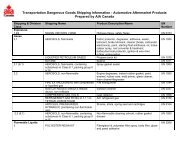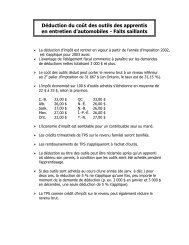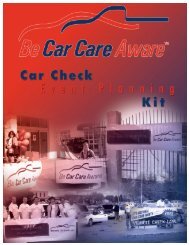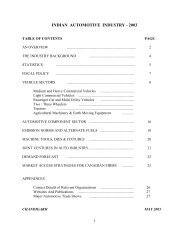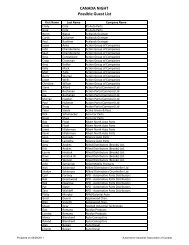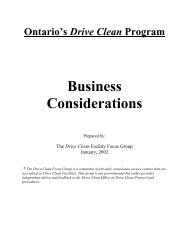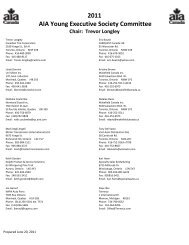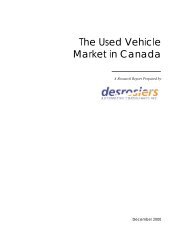Euro 5 Impact Assessment - Automotive Industries Association of ...
Euro 5 Impact Assessment - Automotive Industries Association of ...
Euro 5 Impact Assessment - Automotive Industries Association of ...
You also want an ePaper? Increase the reach of your titles
YUMPU automatically turns print PDFs into web optimized ePapers that Google loves.
Figure 2: Type approval values for petrol passenger cars, status early 20056.2.2.1. HC Emission Limits for Petrol CarsThe expert panel who analysed the responses concluded that for most petrol cars, it wasunable to distinguish any noticeable difference in costs between scenarios J and K withHC emission limits staying the same (100 mg/km) or being reduced by 25% (75 mg/km).Similarly, the cost estimates for scenarios H and I were identical irrespective <strong>of</strong> whetherHC emission limits stayed the same or were halved to 50 mg/km. Therefore for thescenarios reviewed, reductions in HC limits can be achieved at zero additional cost for anygiven NO x reduction. This result suggests that tightening <strong>of</strong> the HC limit should beconsidered when NO x reductions are also under consideration.6.2.2.2. NO X Emission Limits for Petrol CarsThe Commission services decided to consider reductions <strong>of</strong> NO x from petrol cars beyondthe current <strong>Euro</strong> 4 standard because - as Table 2 shows - NOx can be reduced in petrolcars at relatively low cost.In addition to issues associated with air pollution, Member States also have objectives toreduce emissions <strong>of</strong> greenhouse gases. A further rationale to seek NO x reductions frompetrol cars is to ensure that the price differential between more fuel efficient diesel,emitting less CO 2 , and less efficient petrol vehicles does not widen excessively.Given current type approval values (see Figure 2), a NO x emission standard <strong>of</strong> 60 mg/kmwas selected as being the appropriate limit value (Scenario M). This limit value providesfor additional emission reductions at relatively low cost to consumers (€ 51 per car).6.3. <strong>Impact</strong>s <strong>of</strong> the Core ScenarioOn the basis <strong>of</strong> the analysis <strong>of</strong> the individual scenarios for diesel and petrol vehiclesdescribed above, a core scenario for <strong>Euro</strong> 5 was defined. This scenario was:• Diesel: 5 mg/km PM and 200 mg/km NO x (scenario G above)20



